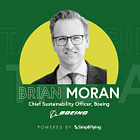How Boeing's Cascade tool can help aviation move beyond static roadmaps to dynamic net-zero planning
Two recent workshops, co-hosted by Boeing and SimpliFlying, revealed the power of real-time, data-driven decarbonisation planning, and the opportunities along with challenges ahead.
When we wrote Sustainability in the Air: Volume Two, we emphasised a key shift the aviation industry needs to make: from fixed roadmaps to flexible, data-driven planning. The Boeing Cascade Climate Impact Model was one of the few tools we saw supporting that transition — not because it had all the answers, but because it helped the right questions to emerge.
Last month, we saw it in action. At two workshops co-led by SimpliFlying and Boeing — in Amsterdam (Sustainable Aviation Futures Congress Europe) and Farnborough (Sustainable Skies World Summit) — nearly 70 participants from across the aviation ecosystem, including airlines, fuel producers, finance institutions and policymakers, used Cascade to build and test different decarbonisation pathways.
Working in groups, participants developed net-zero scenarios based on either narrowbody or widebody business models. This approach encouraged diverse assumptions and surfaced a range of trade-offs — from passenger load factors to offset use — that reflected different operational realities.
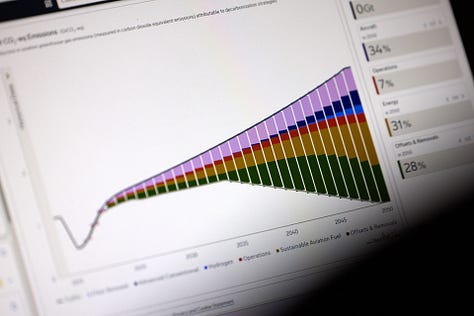

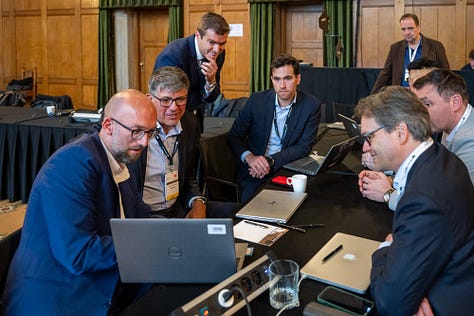
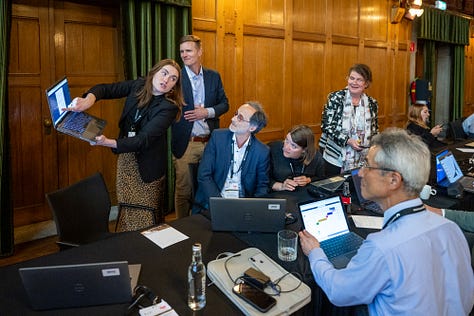
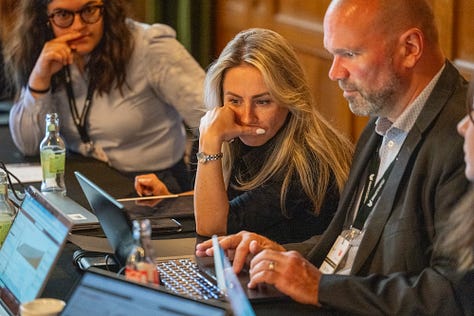




The power of real-time scenario planning
One of the most meaningful shifts we observed was how quickly Cascade helped highlight the interconnectedness of decarbonisation strategies — a true system-of-systems problem. As participants adjusted assumptions around fuel type, aircraft, or traffic growth, the downhill impacts became immediately visible, often in surprising ways.
In Amsterdam, early optimism about synthetic fuels gave way to concern as energy requirements were modelled. Some groups found that fleet renewal, while offering substantial gains, must still be paired with improvements in air traffic management or meaningful SAF uptake. The discussions also underscored how operational efficiency, including factors like passenger load, can significantly influence overall emissions outcomes.
This kind of dynamic modelling complements more traditional static models by helping to turn decarbonisation planning into a live, interactive process, grounding ambition in consequence and opening space for systems-level thinking — something that our book argues is urgently needed.
That depth of engagement became even more apparent during the workshop in Farnborough, where participants frequently paused to probe the assumptions behind key levers, sparking detailed debates on energy conversion efficiency, infrastructure scaling requirements, and the physics of alternative fuels. Their willingness to “get into the weeds” of the model’s mechanics added rigour and helped pressure-test some of the more ambitious scenarios.
Several were recalibrated mid-session as feasibility constraints came into focus, anchoring the outputs in operational and policy reality. It was a reminder that real-time modelling is most powerful when paired with real-world expertise.
Four takeaways that stuck with us
Across both sessions — and despite differences in expertise, region, and group composition — four themes kept surfacing. Each revealed a different facet of what realistic, collaborative planning for a more sustainable aviation looks like in practice.
1. Validating the "SAF&" approach
Our new book extensively covers Boeing’s “SAF&” strategy — the recognition that while SAF will do the heavy lifting in aviation decarbonisation, no single solution will be sufficient. The workshop discussions provided real-world validation of this approach.
Participants consistently gravitated toward balanced scenarios that emphasised the need for more SAF while incorporating operational improvements, fleet renewal, and carbon removals.
Notably, when groups attempted to model scenarios relying heavily on breakthrough technologies like hydrogen or electric aircraft for long-haul operations, they quickly encountered a series of practical constraints around readiness, infrastructure, and physics. The tool made these limitations visible and discussable through charts showing the renewable electricity and hydrogen required for the scenarios.


2. Regional perspectives and policy frameworks
The workshops also reinforced how regional energy mixes and policy frameworks shape decarbonisation strategies.
While both workshops used similar scenarios, the Amsterdam session's EU focus versus Farnborough's UK emphasis revealed subtle but important differences in priorities and constraints.
Amsterdam groups more frequently referenced EU policy alignment, SAF blending mandates, and cross-border resource dependencies. In contrast, Farnborough participants drew on the UK’s SAF revenue guarantee and discussed national constraints around energy infrastructure and carbon removals.
These regional variations highlight a key point from our book: effective sustainability planning must account for local contexts, rather than relying on one-size-fits-all solutions.
3. Addressing the aviation bubble
One of the most valuable insights from the workshops was about aviation's tendency to plan in isolation.
Workshop participants identified a fundamental blind spot in industry sustainability planning: the failure to account for competition with other sectors for limited sustainable resources.
As one group leader observed, aviation isn't the only industry chasing sustainable feedstocks, renewable electricity, and carbon removal capacity. Demand across all sectors, not just aviation's needs, will determine the price and availability of these resources. This insight opened the space for the system-wide thinking — the kind the industry needs far more of.
4. The collaboration imperative
Perhaps most importantly, the workshops demonstrated the collaborative spirit essential for aviation's sustainability transformation. Boeing's decision to make Cascade freely available, rather than commercialising it, reflects an important "lifting all ships" approach.
Participants praised not just the tool's technical capabilities or user experience, but also its role in facilitating industry-wide dialogue. As one attendee noted, the ability to explore "what if" scenarios with real data transforms abstract sustainability discussions into concrete planning exercises.
This collaborative approach addresses a critical challenge the industry must address: moving beyond competitive positioning to collective problem-solving.
Looking forward
The success of these workshops, particularly the standing-room-only attendance in Farnborough despite challenging scheduling, demonstrates the industry's hunger for sophisticated sustainability planning tools. The technical depth of engagement, the quality of debate, and the practical scenarios developed all validate our vision in Sustainability in the Air.
Boeing's Cascade tool represents more than sophisticated modelling software; it embodies an approach to sustainability planning that prioritises transparency, collaboration, and data-driven decision-making.
Aviation's path to net-zero requires sophisticated tools, collaborative planning, and the courage to confront complex tradeoffs with data rather than wishful thinking. Boeing's Cascade tool, and the industry's adoption of it, suggests we're moving in exactly that direction.
Special thanks to Boeing for their trust and collaboration, to the organisers of Sustainable Aviation Futures Congress Europe and the Sustainable Skies Summit for hosting us, and to every participant who brought curiosity, rigour, and insight to the sessions.



